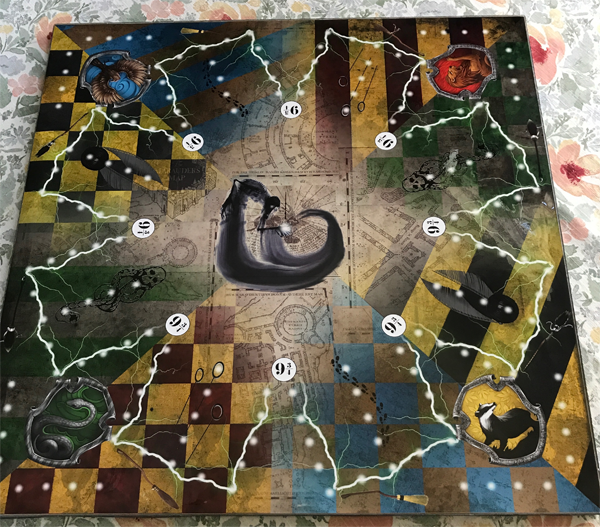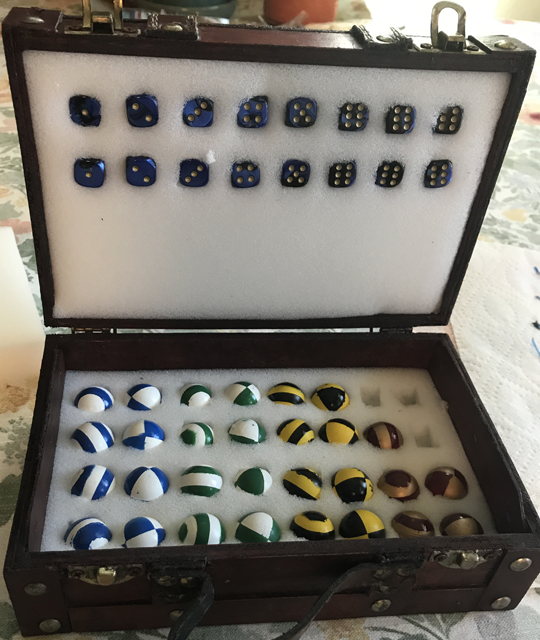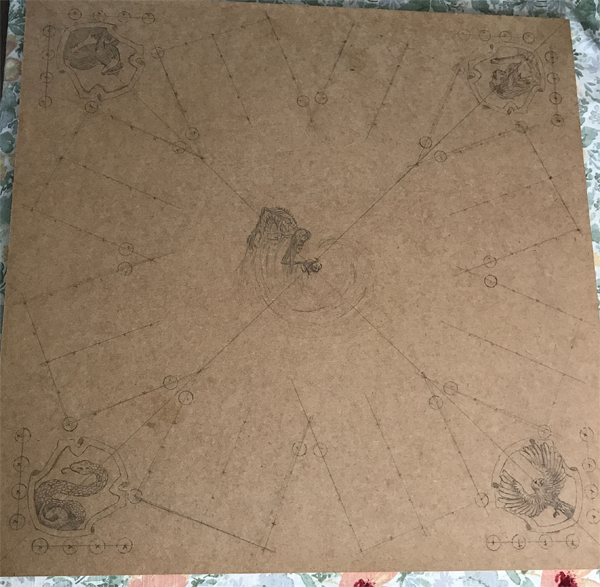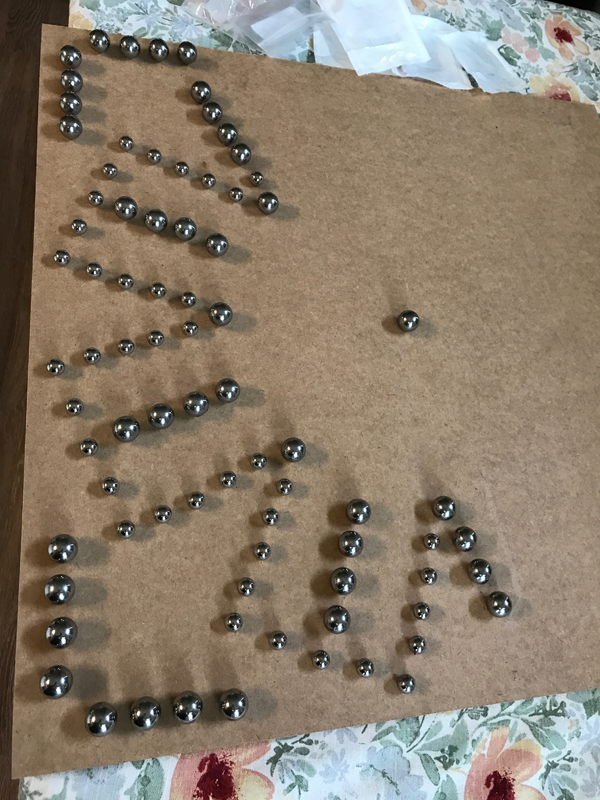"Kill" Game


Eight-player board game based on Aggravation and a six-player variant made by some good friends of mine. This board was put together using Harry Potter inspired artwork, magnets, and a lot of patience. The board was designed using Photoshop, printed, laminated and glued to a 2' square piece of MDF. The back of the MDF was drilled to allow for the installation of ceramic magnets at every position on the board (177 if I recall correctly). While the magnets are clearly overkill (gravity would hold square pieces on the board for a lot less money), they give the Harry Potter theme a bit more clout as the chosen game pieces are metal spheres which are allowed to roll a bit, but 'magically' stay in the correct positions. The four metal spheres for each player were painted with according to the colors of their assigned house (Gryffindor, Slytherin, Ravenclaw and Hufflepuff).
This collection of rules may be incomplete, and will likely be modifed in the future.


Setup:
- Each player selects a set of four matching pieces and places them in the corresponding four home spaces at the corner of the board. Note that the color schemes on the pieces match exactly one section of the board.
- Each player also takes two dice from the game box.
- The player with the longest hair goes first.
- Individual Play (2 - 8 players): Each player works independently to move all four of their pieces from their home locations (in the corners of the board) to the goal locations (on the interior of the main track).
- Team Play (2 - 4 teams): This works the same as individual play until one or more members on a team successfully move all of their pieces to their goal locations. After this the player with all of their pieces in the goal rolls to help move the pieces of another member of their team (the name of the player to be helped must be stated prior to the roll, otherwise the roll is forfeited). While the game board has been designed for two-palyer teams, more than two players can be on same team. Although this is not required, it is recommended that with two-player teams, each player of the same team sits across from one another occupying the two regions of the board representing a single house. In this setup the players of the same team will have the same colors, but in different patterns.
- During a player's turn, the player rolls both of their dice, and attempts to move their pieces (or potentially the pieces of a team member - see Team Play above) according to the following:
- - Each die is considered separately, in that they can be applied to different pieces or both to the same piece. Note that when using a die to move a piece, the piece must be moved exactly the number of spaces indicated by the die. Player's must move a piece if they are able, but may choose the order in which the die values are applied (Note this may result in an inability to apply one of the dice).
- - Player's may not move a piece into the same space as one of their other pieces.
- - If a player's piece lands on an opponents (or teammates) piece then the opponents (or teammates) piece is killed and sent back to the corresponding home space.
- - Player's may not pass their own pieces.
- - If a 1 or 6 appears on a die then the player may move one of their pieces from their home spaces to the their starting space on the main track, indicated by the broom stick.
- - If a 6 is rolled then the player may roll that die (only the die with the 6) again after moving a piece 6 spaces. If no piece can be moved exactly 6 spaces the player may not roll that die again during that turn. If both dice show 6's then the same rule applies to both.
- To win the game a player (or all members of a team) must successfully move all of their pieces around the board and into their goal spaces.
- Movement around the board follows the path clockwise.
- 8 Points: The main path comes to eight points on the interior of the board. These positions on the board form an inner track that can be used as a shortcut around the board. However, in order to use this shortcut, a piece must have ended exactly on one of these positions either at the end of the previous turn or during a single turn using one of the two die values. The same rules apply for movement around this shortcut track, and it should be noted that a piece may not leave the shortcut using a portion of a die roll. For example, if a die shows 5 players must use all 5 movements in the shortcut track, and not say 3 in the shortcut track and the remaining 2 in the main track.
- Center Space: A piece can be moved to the center space on the board from any of the 8 points (the interior shortcut track) if either of the following are true:
- - A piece is currently on one of the 8 points and a 1 is rolled on one of the dice.
- - During normal movement a piece would land one position beyond one of the 8 points on the main track. The center space can be considered as the next space connected the 8 points.